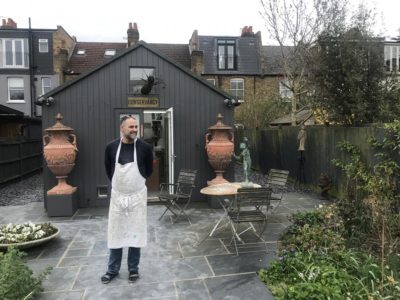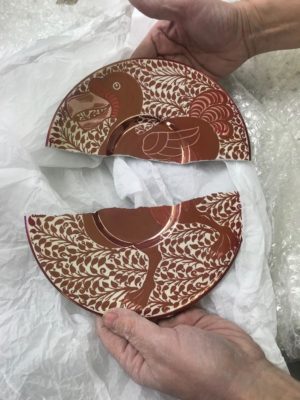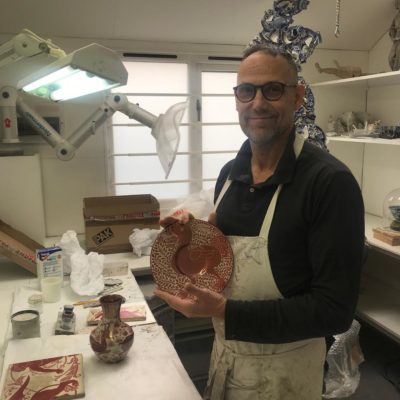With a generous donation from the Derek Hill Foundation, the De Morgan Foundation was recently able to conserve some wonderful De Morgan ceramics which will now enter our handling collection so they can be enjoyed close-up by our school groups and visitors.
Our conservator, Bouke De Vries, explains the complex process of conserving De Morgan ceramics.

When I was studying ceramics conservation at West Dean College, the history of ceramics was an important element. One of the outstanding names among ceramic makers was that of William de Morgan and ever since then I have been fascinated by his work and its technical accomplishments. So it was a real pleasure to receive an email from Sarah Hardy asking me if I’d be interested in conserving a number of pieces from the collection of the De Morgan Foundation. Yes, indeed I would.
I visited Sarah at the facility where the works are stored. We reviewed a number of pieces and selected those most appropriate for conservation in the context of their requirements (some will be taken to schools and will be handled by the children).
When the pieces arrived at my studio the first action was to clean the break lines with cotton swabs and acetone. Next the pieces were stuck back together with a conservation-grade adhesive. Then the real fun began.

As much as I admire De Morgan’s works, conserving them is another thing altogether. This is especially tricky because of his famous lustre glazes, achieved through chemical reactions during the firing process. Reproducing the quality of these magical, fugitive glazes using conservation materials is pretty much impossible. From three decades’ experience I have learnt that the best ways to proceed with such pieces are to do the very minimum of intervention and to match the colours of the decoration rather than those of the lustre. This makes the intervention appear less obvious; thus the repair will be visible but in as discreet a manner as possible. It also protects the integrity of the piece.
I must say that in this case the results were rather satisfactory; and I love the idea that some of these pieces will now continue their life as an educational tool rather than sitting as broken fragments in a storage box somewhere.

We can only conserve our collection with donations. Please donate now if you can.






